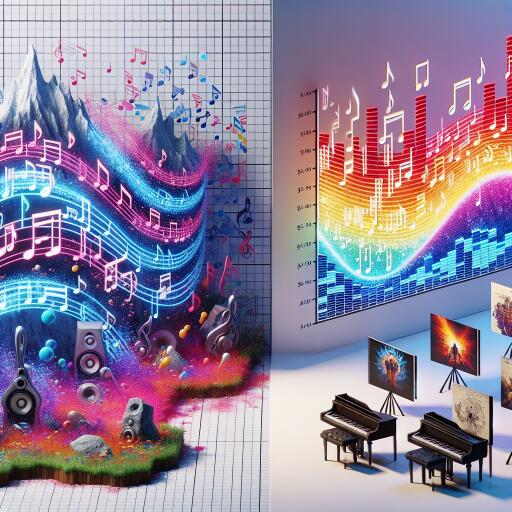Dynamic Music in Games: From Interactive to Static Soundtracks
The world of video game music is a fascinating blend of creativity and technology. One intriguing aspect of composing for games is the ability to create dynamic soundscapes that respond to player actions and in-game events. This is achieved through techniques known as horizontal and vertical composition, which allow different musical sections or loops to seamlessly interact and adapt in real-time.
Despite the complexity of dynamic soundtracks, many games also offer linear or static soundtrack releases. This begs the question: how does the transition from dynamic in-game music to a static audio album occur?
Understanding Dynamic Music
Dynamic music in video games refers to compositions that change based on gameplay dynamics. This could involve layering tracks, introducing or removing instruments, or altering melodies in response to triggers such as player actions, game settings, or storyline developments. The goal is to enhance the player’s immersion by providing a tailor-made auditory experience.
Composers employ two primary methods for achieving this adaptability:
- Horizontal Composition: This involves multiple musical segments that can be looped or sequenced in varying orders to adapt to gameplay.
- Vertical Composition: Here, layers within a musical track can be added or removed, adjusting the texture and intensity of the music, depending on the situation.
The Transition to Linear Soundtracks
With dynamic soundtracks being as intricate and adaptive as they are, how do composers distill these into linear, static versions suitable for soundtrack releases?
The transformation from dynamic to linear soundtracks involves a few considered steps:
Selection of Musical Themes
Composers start by selecting the main themes and motifs that best represent the game’s musical identity. These selections generally revolve around the game’s key narrative and emotional beats. Emphasis is placed on tracks that maintain the emotional resonance outside the game’s interactive environment.
Segment Rearrangement
Once essential themes are identified, composers may need to rearrange segments and loops to form complete tracks. This could involve extending sections for standalone listening or creatively stitching together pieces to convey a narrative without interactive elements.
Mixing and Mastering
The final step is in traditional audio production: mixing and mastering. Here, the compiled tracks undergo adjustments in tone, balance, and dynamics to ensure quality and cohesion across the entire album. This process also helps the music stand independently, away from its original, interactive context.
Conclusion
The dual nature of dynamic music design in video games presents unique challenges and exciting opportunities for composers. Crafting a soundtrack that seamlessly shifts from interactive, real-time compositions to a fixed, linear album requires technical skill and creative insight. The outcome is an experience that captivates in-game and also resonates as a standalone piece of art.








